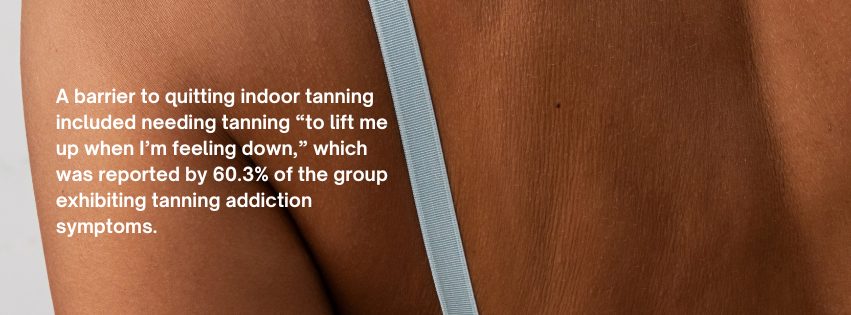Behavioral Addiction Responsible for Excessive Indoor Tanning

Most people are aware of the link between indoor tanning and skin cancer – so why do they still do it? New research in BMC Psychology suggests that excessive tanning is linked with behavioral addiction.
The data published by Allison Leip and colleagues is consistent with the concept that some individuals experience symptoms of tanning dependence. They might neglect their responsibilities in favor of indoor tanning and even continue tanning after receiving a diagnosis of skin cancer.
The study is essential for clinicians and the public to understand that methods other than education on skin cancer may be needed to reduce tanning among this group. Behavioral control interventions and education could be implemented when designing tanning cessation methods to prevent skin cancer.
In the study, the authors surveyed 280 non-Hispanic White women from across the U.S. who engaged in at least 10 indoor tanning sessions over the past 12 months. They found that these women worried about getting skin cancer all the time (22.4%) or sometimes (43.1%), yet were unable to control the urge to tan.
A barrier to quitting indoor tanning included needing tanning “to lift me up when I’m feeling down,” which was reported by 60.3% of the group exhibiting tanning addiction symptoms. The majority of this group (71.6%) reported they would not be as confident if they quit indoor tanning.
Although 40.5% of the group addicted to indoor tanning wanted to quit, most stated it would be extremely hard (47.0%) or hard (30.4%) to do so, and most (61.2%) did not intend to quit in the next 12 months. Half of those addicted to indoor tanning said they had attempted to quit tanning at least once in the past 12 months. In addition, more than half of those addicted to tanning were told by a friend or relative that they needed to stop or cut down on their tanning behavior.

Even though the number of indoor tanners has declined in the U.S. with increasing education about cancer risks, the percentage of excessive tanners has grown. These tanners use an indoor tanning device more than 25 times per year and more often than needed to maintain a tanned appearance. This suggests that excessive tanners are driven by needs that are not based on cosmetic reasons.
Since the pattern of tanning more often than “necessary” mimics the condition of tolerance, the study’s authors wondered whether there was a link based on psychology. Tolerance applies to a rewarding activity that improves mood, but the feeling diminishes over time, which makes the individual increase the frequency of the activity to achieve the same feeling. It partially explains why people addicted to gambling, smoking, or consuming excess alcohol increase the frequency of their behavior over time.
Reasons given for not quitting indoor tanning by the group addicted to the behavior included feeling “tense and irritable” without tanning (41.4%) versus the group that did not display the addiction (6.8%). Peer pressure did not appear significant since only 34.5% of the excessive tanners agreed it would be “hard to quit because so many others around me are tanning.”
Before this study, the evidence supporting indoor tanning as a behavioral addiction was not enough to justify recognition. The authors here were able to demonstrate one key feature of addictive behavior – continuing the behavior even when the individual knows there are serious health concerns about its impact.
The summary was based on the 2025 publication, “Building evidence for indoor tanning as a behavioral addiction: concerns, problems, and change perceptions are associated with addictive symptoms,” published in BMC Psychology by Allison Leip, Carolyn J. Heckman and Jerod L. Stapleton.






